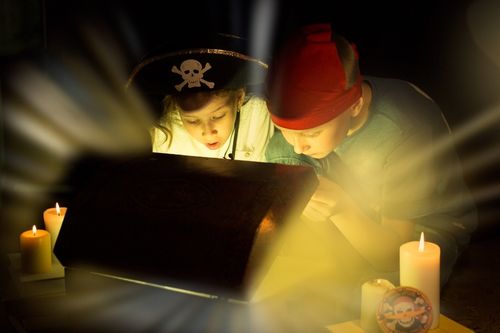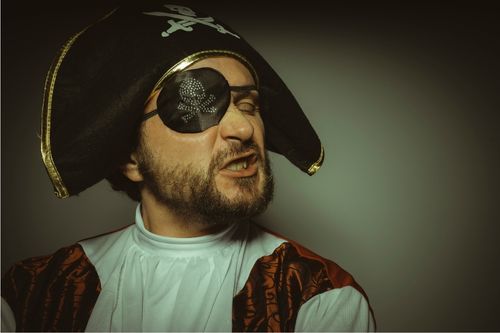Table of Contents
Pirates of the Caribbean movie review
Yes, the film is based on a ride at a theme park (as sources of cinematic inspiration go, ranks well below comic books and even video games). It has a cumbersome subtitled name that is only slightly less awkward than Lara Croft: Tomb Raider – The Cradle of Life and clumsier than Charlie’s Angels: Full Throttle. Yes, it is a classic pirate movie; the last one to come to mind was the flop Cutthroat Island from 1995.
However, this Pirates of the Caribbean movie review manages to surpass all expectations for entertainment value, humor, excitement, and romance. If it doesn’t transcend the genre of pirate movies, it does so at least in the genre of theme park attractions, becoming respectable summer popcorn action fare. While it isn’t in the same league as Raiders of the Lost Ark, at least, it shares the same spirit. The critics have compared it to such genre-celebrating films as The Princess Bride and Raiders of the Lost Ark.
Parents should be aware that Pirates, the first PG-13 film to carry the Disney label, is an action movie rather than a family movie because it is a Disney release (as opposed to that of Touchstone or another Disney affiliate). While there is no sex or nudity, there is some light wordplay and sensuality in keeping with the roguish atmosphere of the pirates, and there is more than enough swashbuckling violence and undead pirates to make it too intense for younger viewers.
Pirates of the Caribbean movie review- The story in brief

In a prologue, young Elizabeth Swann is on her way to Port Royal when her ship assists in the rescue of young William Turner from a battle involving the legendary pirate ship Black Pearl. Elizabeth removes a priceless medallion from William’s neck while he is unresponsive. Years later, Commodore James Norrington (Jack Davenport) is courting Elizabeth (Keira Knightley), but she might be more in love with the mature Turner (Orlando Bloom). Pirate Captain Jack Sparrow (Johnny Depp), a free-spirited outlaw, washes up on shore seeking to commandeer a new ship.
The Black Pearl, captained by Captain Hector Barbossa (Geoffrey Rush), suddenly launches an attack on Port Royal with the aim of regaining the lost medallion and ending the curse of the undead. Sparrow engages Turner, who is now a skilled sword maker and blacksmith, in combat that follows. When Turner’s identity and family history are revealed to Sparrow, the two men join forces to attempt to mount a risky rescue operation for Elizabeth after she is captured by Barbossa.
Pirates of the Caribbean movie review- The taste it leaves
The Black Pearl, which clocks in at 142 minutes and is loud, silly, and tedious, shows off a laid-back Johnny Depp updating the pirate persona with a lot of cool ironies. As the rest of the film gradually disintegrates under the weight of excess, Jack Sparrow’s detached mannerisms provide the barest minimum of interest. Based on the Pirates of the Caribbean movie reviewers, The Disney theme park ride served as the inspiration for Gore Verbinski’s Black Pearl, a film that painfully lacks any clear and concise plot elements beyond the most mundane notions. The plot is a convoluted and distant afterthought in this film, which is all about visuals and attitude.
Black Pearl dissolves into mindless misadventures involving hordes of animated skeletons and faceless extras, endless CGI-generated sword fights, and character movement between ship and shore action in search of the next dull set-piece according to our Pirates of the Caribbean movie reviewers. Turner, Jack, and Elizabeth alternately go missing before being freed in order to serve the next tedious clash between computer-generated figurines. Even the eight to the twelve-year-old crowd will grow weary of sitting through two hours and twenty minutes of repetitive flimsiness, despite the ancient curse, the medallion treasure, and the undead in the moonlight entertaining them.
Masterful acting

Although Depp deserves praise for creating a new pirate prototype and Sparrow is an intriguing character, he frequently plays a supporting role in his own film. Every half an hour or so, he makes a wise intervention, but overall, a lot of murky mayhem slips him. Black Pearl is at least frequently atmospheric and attractive to look at thanks to Verbinski. But this is merely clever packaging without any actual content; it is a soulless exercise in asset monetization.
Key takeaways
- “Pirates of the Caribbean: The Curse of the Black Pearl” is a 143-minute film that contains a nice little 90-minute B movie that charms the audience before dragging on for too long.
- The movie has the impression of having a sequel, even though the ending leaves room for one; perhaps this is why the title has two meanings. It’s fortunate that actors Geoffrey Rush and Johnny Depp are present to boost the acting quality.
- Even during completely pointless sword fights, their characters—two top-notch goofballs—keep us entertained.
According to rumors, author Dave Eggers wants to open a pirates’ store with custom-made planks, and “The Curse of the Black Pearl” sounds like one of his daydreams.
Liked this blog? Read next: Top 10 YouTubers in India
FAQ
Q1. Why was the Black Pearl cursed?
Answer- As the undead result of greedily stealing cursed Aztec gold from the Cortez chest, which was cursed by the pagan gods, they were cursed to live forever. They attempted to take control of the HMS Dauntless ship, but Jack Sparrow was able to lift the curse by using the last bit of Aztec gold and his blood, which was obtained by cutting off his hand.
Q2. What happens to the Black Pearl?
Answer- Barbossa’s men were quickly routed, and Blackbeard captured, magically shrunk, and encased the Black Pearl in a bottle. Barbossa believed himself to be the only survivor of the assault because he had to amputate his own leg in order to leave the doomed Pearl.
Q3. What is Jack Sparrow’s age?
Answer- It has been determined that the first Pirates of the Caribbean film is set in 1728, which means Jack would be 38/39 in The Curse of the Black Pearl. This conclusion was made possible by concept art from later films and Henry Turner’s development.







